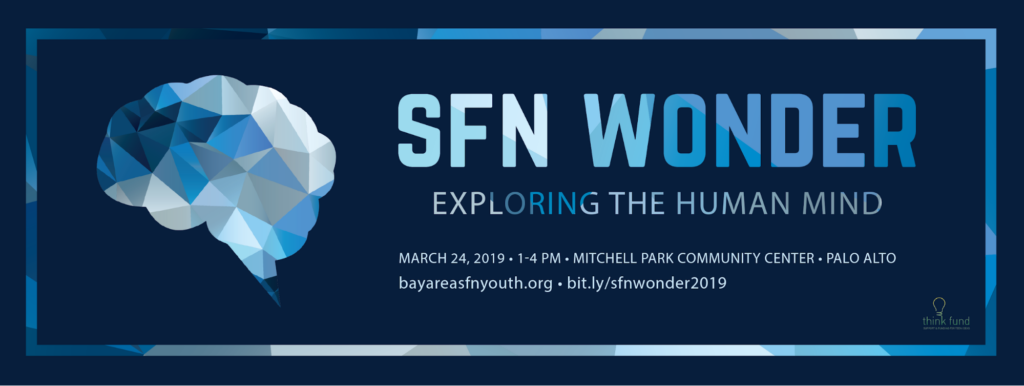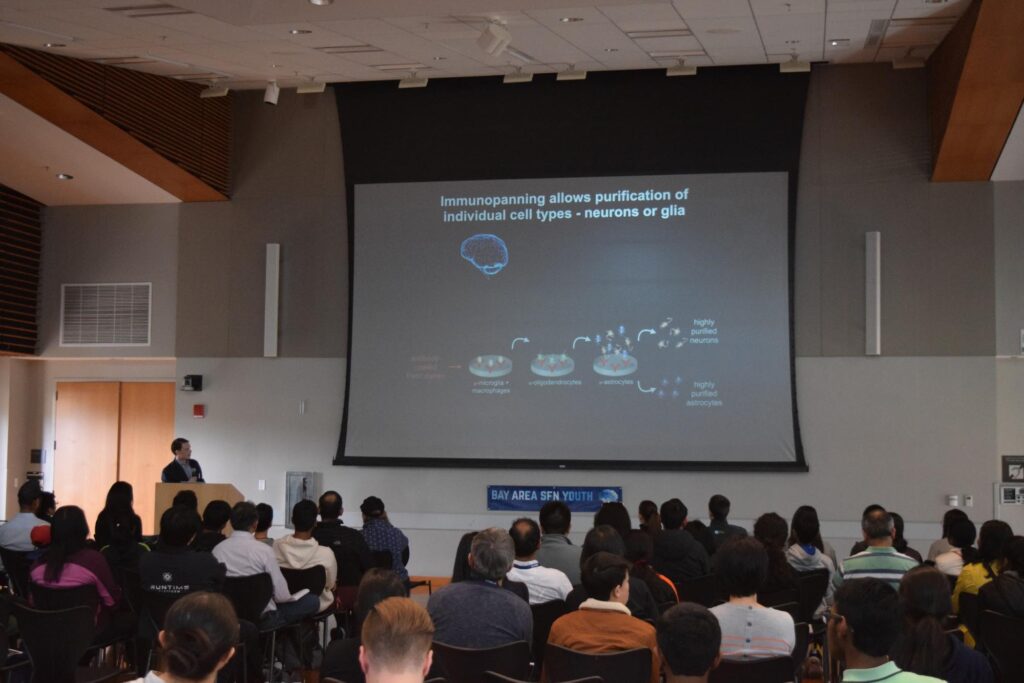
In March of 2019, I attended Bay Area Society for Neuroscience Youth’s biggest event of the year: SfN Wonder. The event featured five guest speakers: Dr. Brad Zuchero, Yung Leong, Dr. Blair Kaneshiro, Teresa Bell-Stephens, and Cole Holderman. Each speaker talked about a different aspect of neuroscience in which they specialized. All the speakers had amazing presentations, but I found Dr. Zuchero’s and Mr. Holderman’s talks especially interesting. Dr. Zuchero talked about his work on neurophysiology and glial cells, and Mr. Holderman spoke on health awareness with regards to Huntington’s Disease.

Dr. Brad Zuchero started his lab at Stanford University 2 years ago with a special focus in glial cells. He explained that glial cells make up more than half of brain cells, yet scientists have not studied glial cells. Dr. Zuchero talked about how his research studied the role and function of glia. To do so, he had to differentiate glial cells from neurons and divide them into their various types, the prominent ones being microglia, oligodendrocytes, and astrocytes. Dr. Zuchero focused on the role of microglia, oligodendrocytes, and astrocytes. Ultimately, the takeaway from Dr. Zuchero’s presentation was that glia are crucial to how we view nervous system disorders. Stroke, for example, results in massive death of neurons as well as the death of other cells like astrocytes. Without astrocytes, neurons cannot form synapses and thus die. Yet, nearly every drug trial to date for stroke has targeted the neurons instead of the glia. Glia are the untapped therapeutic target for brain disorders, and they deserve much more research and investigation than they currently get.

The next talk that I found particularly fascinating was given by Mr. Cole Holderman. Mr. Holderman is a senior at Stanford University majoring in Human Biology. He is also the student director of the Huntington’s Outreach Project for Education at Stanford (HOPES). Mr. Holderman talked about health literacy with regards to Huntington’s Disease (HD). HD is a rare dominant neurodegenerative genetic disorder. Generally, it tends to occur in 5-7 in 100,000 people and can be passed down with only one copy of the mutant gene; therefore, a parent with the disorder has a 50% chance of passing it down to their child. Common symptoms of this constant and progressive degeneration of the nervous system include chorea (inability to stop oneself from moving), behavior changes (inability to stop behavior from happening), and paralysis, among others. Because it is such a rare disorder, HD faces issues in diagnosis, access to treatment, and funding for research. Research on HD is extremely crucial because currently there are no cures and the therapies approved for the disease just treat the symptoms.
Mr. Holderman talked about the origin and creation of HOPES: in 2000, Professor Bill Durham realized that most of the HD resources at the time were geared towards medical professionals, not the families of patients with HD. Professor Durham decided to create a source that could show what Huntington’s is in simple, accessible terms. Thus, HOPES was founded and had tremendous success in making patients community experts in the disease. By 2007, HOPES had become one of the leading HD information sources with 1 million readers. Now, HOPES has begun to interface with local support groups and organizations, while also providing information on research and clinical trials, HD in the media, and laws affecting HD patients. Mr. Holderman told us that the future of HD is looking a lot brighter than it was years ago when nearly no one even knew what the disorder is. There is even a very promising Phase II clinical trial for a potential disease limiting treatment that uses ASOs (allele-specific antisense oligonucleotides), which are little strands of mRNA that bind to other mRNA. The hope is to silence the Huntington gene to stop it from making the atrophy-causing proteins in order to extend the lives of patients with HD.

Overall, SfN Wonder is such a great learning opportunity. I greatly enjoyed listening to the diversity of experiences and research present in the field of neuroscience while also talking to and interacting with professionals in the field. If you have not attended an SfN event previously, I highly recommend that you do; they are extremely informative and interesting.